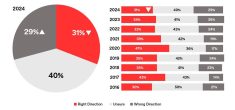When the pig scramble was over at last spring’s Royal Winter Fair in Brandon, its 11 porcine participants left the ring destined for small-town food banks.
Five co-ops in Westman covered the costs to have the pigs fed and slaughtered, and about 1,500 pounds of their meat was donated this autumn to food banks in Souris, Virden, Killarney, and Moosomin, Sask.
It’s a second year in a row for this initiative, and just one sign of the growing need for food bank donations. This year, 4-H Canada has partnered with Food Banks Canada in a national food drive in which clubs from across the country collect food for local agencies. Farm Credit Canada’s Drive Away Hunger program, which aims to reduce hunger in rural Canada, is now in its sixth year, and has collected more than 7.8 million pounds of food.
Read Also

Mazergroup’s Bob Mazer dies
Mazergroup’s Bob Mazer, who helped grow his family’s company into a string of farm equipment dealerships and the main dealer for New Holland machinery in Saskatchewan and Manitoba, died July 6 from cancer.
This surge of charitable food assistance efforts comes at a time when food bank use is rising across the country.
New figures released by Food Banks Canada show 882,188 persons received food from a food bank somewhere in the country during March 2012. More than 3.9 million meals were also served in soup kitchens, shelters and schools. Overall, demand increased by 2.4 per cent from the previous year and there has been a startling 31 per cent rise since the recession of 2008-09.
The situation is especially acute in Manitoba, which had the highest rate of increase in food bank use of anywhere in the country. Nearly 8,000 more people in this province turned to a food bank in 2012 — a 14.2 per cent jump over the previous year. There are now more than 63,000 people in 21,000 households in the province who rely on food banks.
Trend is clear
The HungerCount 2012 report doesn’t break out numbers for rural areas in the province, but the trend is clear, said Marla Somersall, chair of the Manitoba Association of Food Banks and executive director of Samaritan House in Brandon.
“Some communities may have had a decrease (but) most are up,” she said. “Generally speaking, for the entire province, the demand is on the increase.”
There are 90 food banks operating across the province. While housing costs — a major factor in urban poverty — are lower in rural areas, residents must cope with higher transportation costs. Many people turning to rural food banks say they need a vehicle in order to work, but have trouble paying gas and the cost of operating a car on a minimum-wage job, said Somersall.
“Lots of people report that they may be one or two — if they’re lucky — paycheques away from using a food bank,” she said.
Food banks are also being stretched. The HungerCount 2012 report says food banks could typically offer needy families enough food each month to cover three to seven days’ worth of meals. But the recession changed that — with one in three food banks cutting back on the amount of food they offered, and one in eight running out of food at some point in the year. With more people needing help, just over half of food banks have reduced their assistance levels since the recession ended, the report states.
Third-lowest unemployment
Low wages are a major factor in Manitoba’s food bank numbers, even though the province has the third-lowest unemployment rates in the country.
Another report, the Acceptable Living Level Report, released earlier this year by Winnipeg Harvest and the Social Planning Council of Winnipeg says even two parents working full time at minimum wage jobs have trouble putting food on the table.
The rising cost of living coupled with static wages means the poor are getting poorer, said Donald Benham, director of public education with Winnipeg Harvest. The majority of their clients face tough choices every month, he said.
“The basic equation is rent versus food,” said Benham. “Our clients face that every month.”
About half of all food bank users are on social welfare and they receive shelter allowances that haven’t budged since 1992. The shelter allowance for a single person on welfare is $285.
“And where can you rent something for $285 — except (from) Manitoba Housing? That’s what we’re dealing with,” he said.
Since 1992, the overall cost of living has increased by 45 to 50 per cent and housing costs are up 50 to 60 per cent, he said.
“In essence, for every dollar they’re getting today, they’ve lost 50 cents of value,” said Benham.
HungerCount 2012 calls on Ottawa to spend more on affordable housing. It also recommends the Guaranteed Income Supplement be increased so no senior falls below the poverty line, and the province increase social assistance rates. The report also calls for increasing the value and broadening eligibility for the Working Income Tax Benefit, as well as making more education and training opportunities available for those not eligible for Employment Insurance benefits.
Without some sort of change, food bank numbers are likely to continue rising, many say.
Amanda Naughton-Gale with the Salvation Army in Neepawa said many of the people they serve only turn to a food bank as a last resort.
“A lot of times it’s desperation when they come,” she said. “They’ll say, ‘We absolutely ran out of everything.’”
The HungerCount 2012 report is available at www.foodbanks canada.ca.



















